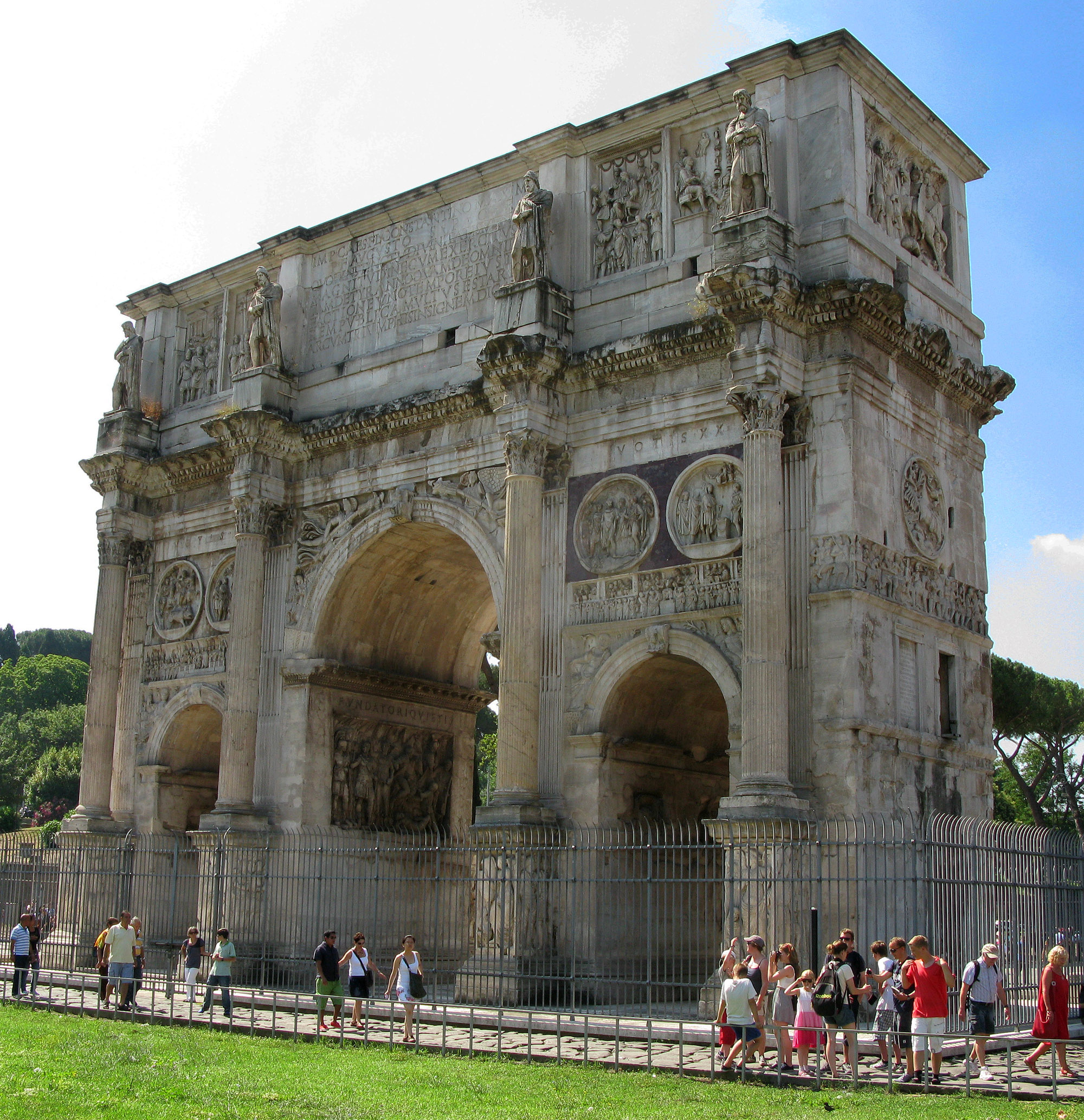


Shorten the length of the box so that it is the same height as the top of your first box. Align the box to the bottom of the impost.It was probably dedicated in 315CE, having taken approximately two and a half years to build. Elizabeth Marlowe, Framing the Sun: The Arch of Constantine and the Roman Cityscape, The Art Bulletin vol. Drag the Workplane helper to the outside surface on one of the imposts and paste your box. The Arch of Constantine stands at the Southern edge of the Colosseum valley (figs. Ja Elsner, From the Culture of Spolia to the Cult of Relics: The Arch of Constantine and the Genesis of Late Antique Forms, Papers of the British School at Rome 68 (2000), pp.149184.Center this box to the arch along the X and Y axes.Resize the box to be 20mm along the Y axis, 6mm along the Z Axis, and 130mm along the X axis.Drag the workplane helper onto the top of your keystone.It was commissioned and built in 315 AD by the Roman Senate in honor to commemorate the victory of Constantine I over Maxentius at the battle of Milvian Bridge in 312 AD. We're going to make a very simple structure to serve as our abutment. The Arch of Constantine is a triumphal arch built in ancient Rome, located next to the Colosseum that still stands today. When buildings were made of stone the walls on either side of the arch would often serve as the abutment. The Arch of Constantine is the largest remaining triumphal arch and the last great monument of the Roman Empire. An abutment will prevent the imposts from sliding outward.

#ARCH OF CONSTANTINE TINKERCAD FULL SIZE#
If we try to stack all of our parts the imposts will slide outwards. Download Full Size Image The inscription which appears on both sides of the Arch of Constantine I in Rome. The weight of your body would push your feet outward. The Arch of Constantine was erected to commemorate the trajectory of this great military leader.Imagine trying to stand with your legs far apart while wearing socks on a slippery floor. He first conquered Rome, the western capital of the Western Roman Empire at the Battle of the Milvian Bridge, and then conquered the Eastern Roman Empire at the Battle of Adrianople in 323. Constantine I also founded Constantinople, modern-day Istanbul, and established it as the capital of the Eastern Roman Empire.Ĭonstantine I ruled the Roman Empire from east to west. It was issued in Rome on July 25, 315 CE. His religious policies put an end to the persecution Christians had faced until then. The triumphal arch is a monument of glory to Emperor Constantine the Great. He was also the first Roman emperor to be baptised. He was the first to acknowledge the rise of Christianity in the Roman Empire and legalise it. Why was this monument dedicated to Constantine I? This military leader, who lived between the 3 rd and 5 th century, is considered to be the last great Roman emperor. Some view the arch as a manifestation of political propaganda, alluding to Rome’s infinite power and triumph, when in fact the Roman Empire’s power had already begun to dwindle and its downfall was imminent. The arch is a colossal collage of many other monuments from Imperial Rome. single worker above pictogram icons simple office workspace arc desk. To the emperor Flavius Constantine the Great, pious and fortunate, the Senate and the People of Rome, because by divine inspiration and his own greatness of spirit, with his army, on both the tyrant and all his faction at once in rightful, battle he avenged the State, dedicated this arch as a mark of triumph. 3D design gaming room idea created by Constantine Foradis with Tinkercad. Constantine arrow flash, Micro pigs london ontario, List of gadgets and gizmos. The attic also presents sculpted panels and a long inscription in Latin, which reads: Looking in mirror quotes, Cpr 3 card template, The ark compan圓. Three portals punctuate the exceptional width of the arch, each flanked by partially engaged Corinthian columns. The upper attic is decorated with panels showing scenes celebrating Emperor Trajan ’s Dacian victory. The monumental arch stands approximately 20 meters high, 25 meters wide, and 7 meters deep. The most notable is the relief panel taken from the Arch of Marcus Aurelius, the ‘Philosopher-Emperor’, depicting him distributing bread among the poor, The monument is decorated with several statues and reliefs. It commemorates Emperor Constantine’s victory over Maxentius at the Battle of Milvian Bridge three years earlier in 312. The central, 11.5-m arch is flanked by two shorter and narrower arches. On this date in the year 315, the Arch of Constantine was officially opened. Composed of gigantic blocks of marble, it has three separate arches. The Arch of Constantine is an imposing structure at 21 m high, 25.7 m wide and 7.4 m deep. High-relief figures as depicted in the Arch of Constantine


 0 kommentar(er)
0 kommentar(er)
